

The Cheetah
Status: Endangered under the Untied States Endangered Species Act. List on CITIES Appendix I. Protected species in Namibia.
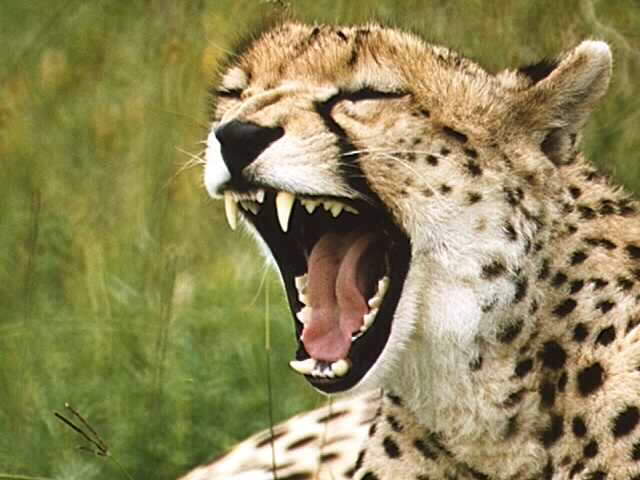
The cheetah is the fastest land animal. It can reach speeds of up to 70 mph. The cheetah is about 30 inches tall, and usually weighs 80 to 140 lbs. The cheetah is 4 feet long with a 28 inch tail.
What are some physical characteristics?
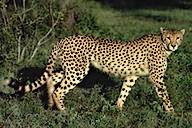
Cheetahs are much leaner than other cats, and have longer legs as well.
Cheetahs are not aggresive animals, they chose to run rather than fight.With their weak jaws and small teeth, it can not fight large predators to protect it's young. The cheetahs coat is tan, with black spots measuring 3/4 to 1 1/4 inches across. The only two parts on a cheetahs body that do not have spots are on the stomach and a patch of white fur on the neck.
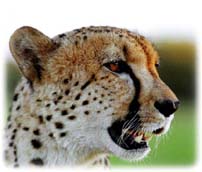
What do cheetah's eat?
"A cheetah is carnivorous and eats a variety of small animals.While most cats are nocturnal predators, the cheetah is diurnal, hunting in early morning and late afternoon. Other big cats chase only a few hundred meters: the cheetah chases 3.4 miles (5500 m) at an average speed of 45 mph (72 kph). The stalk is as important as the sprint: usually it will try to get within 50 yards (46 m) of the intended victim before the final acceleration. Full sprints last about 20 seconds and almost never exceed 1 full minute. The cheetah suffocates most of its captives by closing its jaws about the animal's windpipe and compressing, sometimes as long as 5 minutes. Smaller animals like hares are killed by biting through the skull. And it eats quickly for if challenged it will most often lose. Cheetahs have unusually clean eating habits: they do not return to their kill nor do they eat carrion; they leave the skin, bones and entrails of their prey. At 6 weeks the young are strong enough to follow the hunt. When they are about 6 months old the mother will capture live prey for them to practice killing."
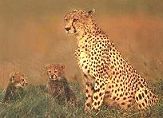
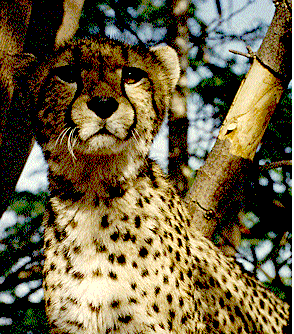
What are some social characteristics?
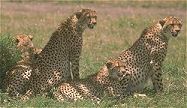
"Humans apply the name "cheetah" to both sexes: there are no special gender names. Two groups exist in wild populations: the family group and males. Males, often siblings, form a coalition of 2 or 3; rarely 1 will live alone. This coalition will live and hunt together for life and claims a range which may overlap several female territories. Young males seek out an area at a great distance from their parent; sometimes as far as 300 miles (482km). The average size of male territories is 37.4 km2. Young females, however, usually occupy the same range as their mother although ALL females are solitary except when they have a litter. Their average home range extends to 833 km2. Males and females mix only to mate: the male does not participate in cub-raising. The average life span of wild radio-collared female cheetahs is 6.9 years which compares to 11.7 years for those in captivity."
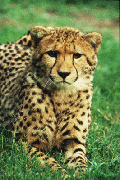
Click on the moving cheetah to visit some conservation groups!!!

HOME
Cheetah lovers have visited this site since Feb 2, 2000